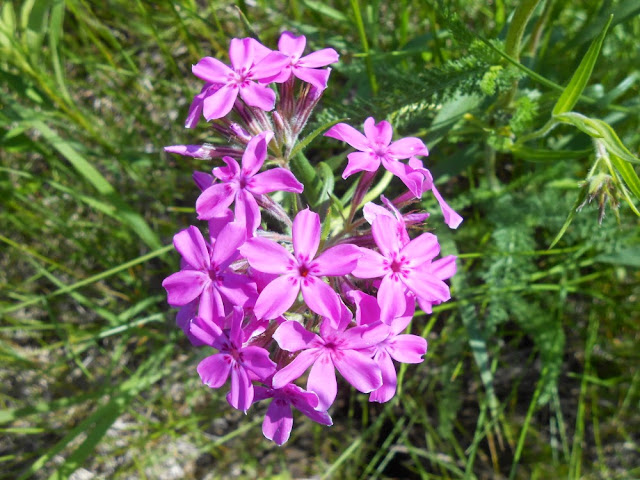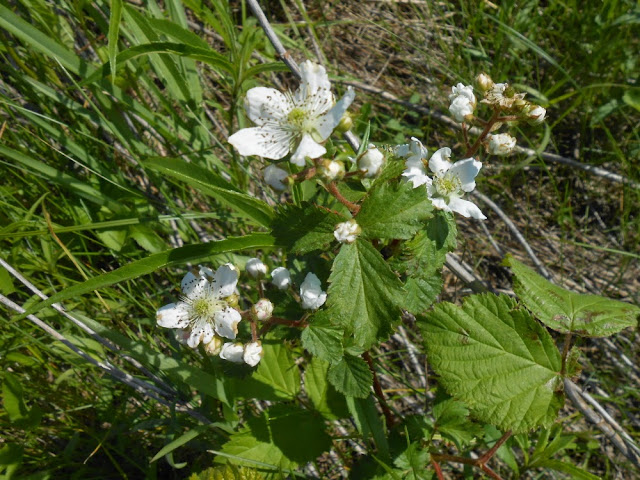I've written before about that mile-long long stretch of prairie remnant sandwiched between U.S. Highway 65 and the Cinder Path south of Derby, but usually in late July and August when Prairie Blazing Stars are in full bloom.
Now, in spring, the the show is more subtle --- but it's easier to keep track of your footing since the plants still are ankle- rather than knee-high, waist-high or taller. Patches of gold and magenta blur as you drive by, but become evident in detail if you stop and wade in.
My advice is to pull off into the driveway that serves a big anhydrous ammonia tank about two miles south of Derby, but then continues a few car-lengths to the path itself and into a farm field beyond. Walk the Cinder Path north for a minute or two until an easy way into the prairie presents itself, then go for it.
You'll get used to the passing traffic, although it may have some difficulty getting used to you. I thought for a minute Thursday afternoon that I was going to be joined by a pickup, driver apparently intent on what I was up to, that hit the rumble strip and veered halfway onto the shoulder before regaining control of the situation and zooming north.
The gold offered up right now is provided by Golden Alexanders, a plant EuroAmerican pioneers thought would cure syphilis --- a subject so indelicate I thought about not bringing it up at all.
The magenta --- prairie phlox; and there are many of them scattered among the grasses here.
So many, in fact, that it's possible to find quite a few natural variations, including this more subtle variety.
Some of the plants are tiny --- a white variety of Blue-Eyed Grass for example --- so it's necessary to look carefully.
Many of the plants I wrote about a week ago after walking the prairie remnants east of Derby are here, too --- Hoary Puccoon, for example, and Common Cinquefoil (below).
If you're looking for early Prairie bloom, I'd advise against walking back to the prairie remnants east of Derby right now --- the conservation staff has been busy here with a brush hog, splintering invasive cedars, honesuckle and other pesky invasives that, unless checked, will overwhelm these precious areas.
These areas will bounce back in a few weeks, but for now the best early blooms are right there in plain sight along U.S. 65.












No comments:
Post a Comment